Hawaii In July: Things To Do In July In Hawaii
A large number of people choose to visit Hawaii in July. It’s summer. The island is warm. The beaches are tropical. But what really makes it stand out are the many festivals to take place in July. It’s almost inevitable you’ll enjoy local festivities no matter the date you choose. Festivals in Hawaii in…
How To Spend 4th of July In Hawaii
Independence Day is just around the corner, hence many are looking for the best ways to see the show. With such spectacular views, we think it’s best to spend 4th of July in Hawaii celebrating in an adventurous way but you may be curious on specifically how to spend 4th of July in Hawaii. How…
5 Unique Proposal Ideas In Oahu
Oahu is the perfect setting to tell your significant other how much you love them with a marriage proposal. Treat her to the surprise of a lifetime with these proposal ideas in Oahu. With its alluring landscapes and unique landmarks, they are sure to give a joyous yes. Warbird flight Give your history buff companion…
5 Ideas for Father’s Day in Oahu
What should you do on Father’s Day? Appeal to his history buff side or take him on an island adventure and show dad that you care with these five ideas for Father’s Day in Oahu. Tropical Brunch Start the day with a hearty breakfast. Cook with the family or avoid the dirty dishes and enjoy…
Thinking Back on Pearl Harbor Memorial Day
In 2017, the US Department of Veterans Affairs estimated that only about 558,000 of the 16 million Americans who served in World War II remained alive. The number of servicemen who were at Pearl Harbor stands at only a few. This handful of living veterans age well into their 90s. As a result, each one’s story…
5 Reasons to Take a Warbird Airplane Ride
People have been awed by the thought of soaring up in the sky since at least the Earth’s first written records. Legends give grounded creatures like horses, humans, and giant lizards the ability to fly though wings. Kites appear to be one of the earliest man-made flying devices, which dominated the skies until hot air…
Top Hawaiian Words and Meanings
As indigenous languages become increasingly scarce each year, their usage and history holds more meaning now than ever. Understanding a few Hawaiian words and meanings isn’t just fun trivia to know for a trip. It’s also a direct connection to the Hawaiian culture and history. Thanks to films and the popularity of the Pacific paradise,…
Getting an Aerial View of Pearl Harbor Today
Pearl Harbor looks a lot different now than it did during the attack of WWII. However, the harbor and surrounding bay has always been evolving throughout Hawaiian history. Even the years leading up to the war had much in store for the area. Getting an aerial view of Pearl Harbor today reveals just how much…
WWII Movies Made in the 1940s That Inspired a Generation
WWII movies made in the 1940s weren’t all just gloom and doom. From romantic dramas to knee-slapping comedies, this wartime era produced some of the most timeless films still enjoyed today. Suffering from a loss of international audiences, Hollywood struggled through the early 1940s, but later found traction as the war years progressed and movie…
10 Unforgettable WW2 Propaganda Posters with Explanation
During American involvement in World War II from 1941–45, the government used propaganda to increase loyalty to war efforts and commitment to victory. Through a diverse set of posters, propagandists encouraged hatred toward the enemy and support for America’s allies. Some images illustrated over-the-top caricatures against ethnic groups associated with the enemy. These bred distrust…
Holoholo (ride around) with us!
Come holoholo with us at Pearl Harbor Warbirds! Make 2018 the best year yet. We offer a once-in-a-lifetime adventure over Oahu — so reserve your T-6 Texan flight today to enjoy the incredible chance to holoholo in the seat of an authentic WWII T-6 Texan airplane over Pearl Harbor as well as see the sights of Oahu,…
Kulia i ka nu’u — strive to reach the highest.
Want to make 2018 truly a year to remember? Your next spectacular trip to the Aloha State wouldn’t be complete without a flight with Pearl Harbor Warbirds. We offer a once-in-a-lifetime, breathtaking adventure that pairs the history from December 7, 1941 with the lovely scenery of Oahu, Hawaii. Book your flight now to enjoy the one-of-a-kind chance to soar in…
